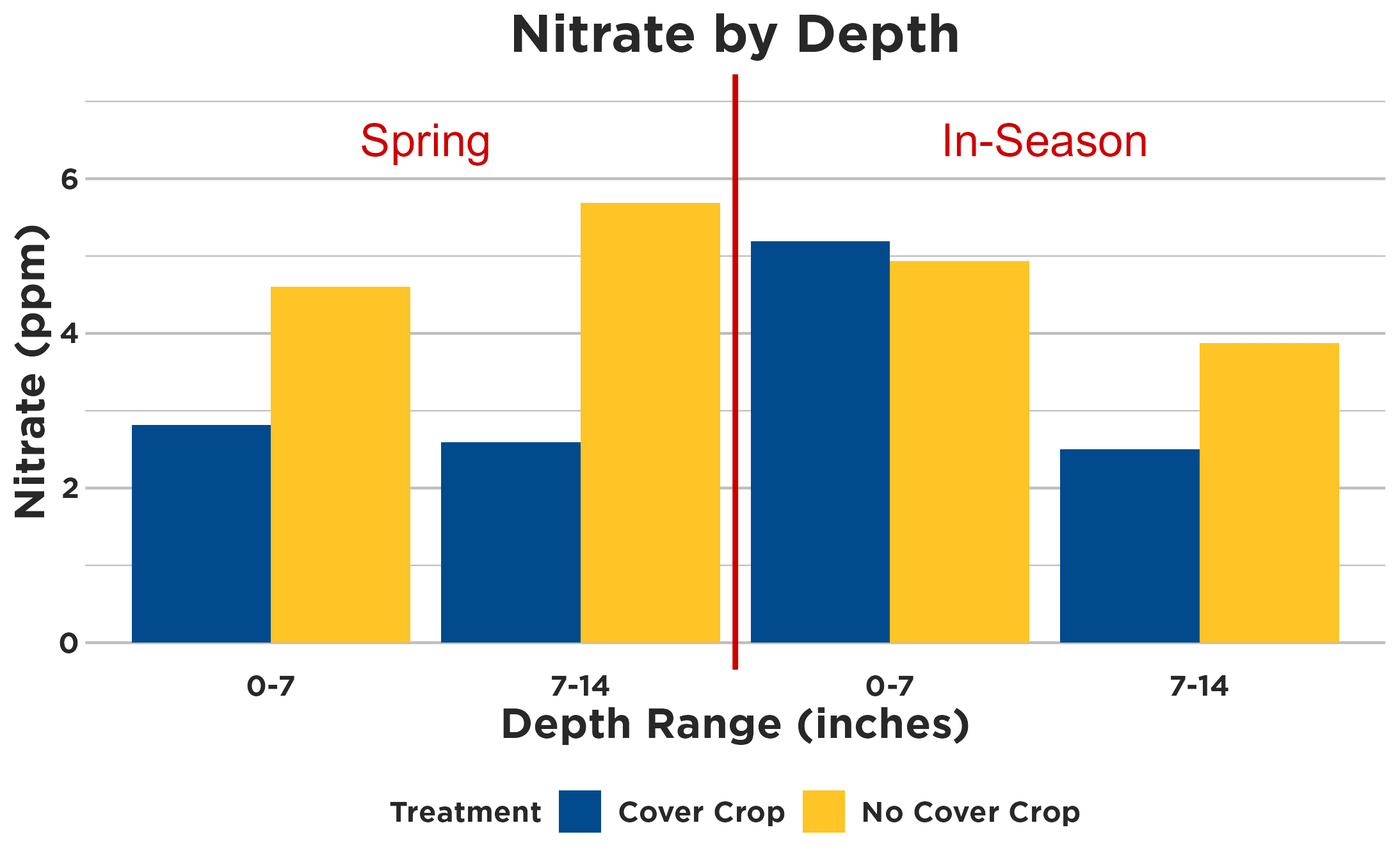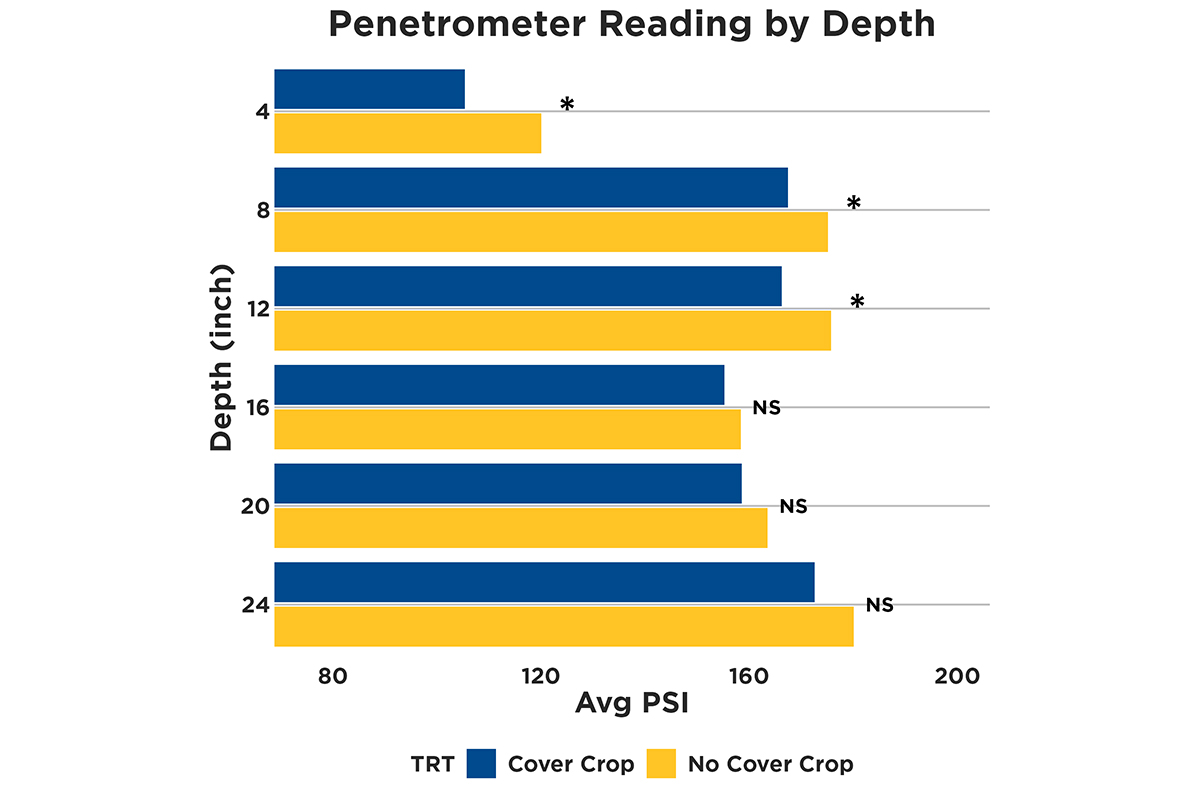Why long-term cover crops show promise
October 1, 2024 | Mikaela Connelly
The 2024 growing season brought varying degrees of extreme weather conditions across Iowa and highlighted issues that have been absent in recent years, potentially because of adequate or excessive moisture. October is a great time to review the past growing season, specifically controllable factors that can be improved next year.
Soil fertility fundamentals
While weather patterns and genetics are key considerations that affect yield results, soil conditions, including soil fertility and nutrient stratification should not be ignored.
Most Iowa soils have a pH ranging from 5.5 to 7.5; macronutrients (nitrogen, phosphorus and potassium) and sulfur are most available for plant uptake at a pH of 7.0. However, micronutrients, such as iron, manganese, boron, copper and zinc, are available at a pH of 5.5. To ensure your soil is at an optimum pH, the Iowa Soybean Association (ISA) and Iowa Corn Growers Association (Iowa Corn) recommend regimented soil sampling across your fields to assess soil pH and nutrient values. See the September Iowa Soybean Review magazine for more details.
To avoid sampling frozen soils, soil sampling should be conducted every four years after harvest or the spring before planting. It is also recommended to sample in smaller grids to better understand variability within each field.
Results from long-term cover crop trials
ISA’s Research Center for Farming Innovation (RCFI) team has managed 14 long-term on-farm cover crop trials across the state that were implemented by ISA or Soil Health Partnership.
In 2024, the project entered its ninth year. The treatments within the study include cover crop and no-till vs. no cover crop and no-till in a corn-soybean rotation.
Earlier this year, ISA and Iowa Corn conducted an experiment to investigate nutrient stratification under different practices.
Throughout this research, soil sampling was conducted at four of the 14 long-term cover crop sites. To reduce variability, the four locations were chosen due to the history of consistent cover crop establishment, and all four were planted to soybeans in 2024.
Stratified soil sampling was conducted in early and late spring. Soil sampling from 0-24 inches was completed in early April before planting, was sampled from 0-24 inches. Macronutrients and micronutrients were sampled as well as cation exchange capacity, organic matter and pH. In early June, late spring soil nitrate and ammonium testing was done at varying growth stages from 0-7 inches and 7-14 inches to understand the changes in soil nitrogen following cover crop termination.
Across locations, the results consistently indicated the cover crop treatment significantly reduced soil nitrate levels compared to the no cover crop treatment in early spring because the cover crops were still actively growing.

These results are consistent with other research that has shown cover crops are effective at scavenging residual nitrogen.
In late-season testing, we did not see the same pattern in the top seven inches of the soil but saw a significant reduction in nitrates in the soil sampled from 7-14 inches. During wet periods like this spring, cover crops are especially helpful in reducing nitrate from leaching through the soil profile.
Additionally, the organic matter was greatest near the soil surface (0-2 inches) in the cover crop treatment compared to the no cover crop treatment. When compared at depths greater than 0-2 inches, there was no difference in the organic matter percentage.
In addition to soil nutrients, ISA tested soil compaction in mid-May, two to three days following a soaking rain. Compaction was decreased within the cover crop treatment across all depths, and the 0-12 inch depths were significantly different when comparing cover crop vs. no cover crop treatments. Neither treatment had yield-limiting compaction, which is typically classified as greater than 300 pounds per square inch (PSI). The reduced compaction in the cover crop treatments indicates that crop roots will have less resistance when growing in the soil.

Boosting organic matter
Implementing cover crops requires additional management considerations. Consulting with other farmers incorporating cover crops, Iowa Corn and ISA agronomists are resources available for successful cover crop implementation.
Notably, the results from this long-term dataset show cover crops provide increased organic matter in the top two inches of the soil and decreased soil nitrate levels and soil compaction.
If you have questions about cover crops or want to partner with ISA for a research trial, contact your local ISA research agronomist.
For more general information about cover crops, please reference the Advances in Cover Crop Management guide on the ISA website, and the cross-site report on yield results from the long-term cover crop trials. For information on cost-share programs, go to iaagwater.org/iowa-cost-share-comparison.
*This project was conducted in collaboration with Iowa Soybean Association, Iowa Corn, Terraform Tillage and SoilView.

Back